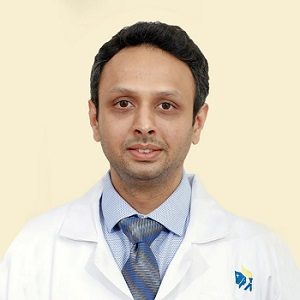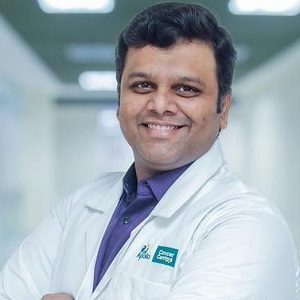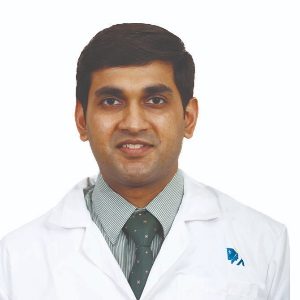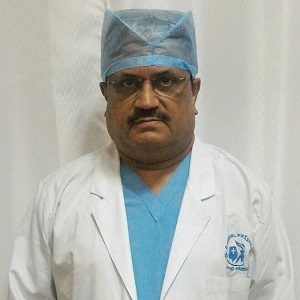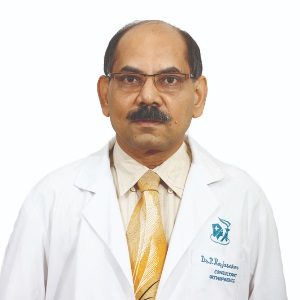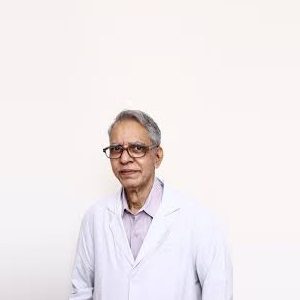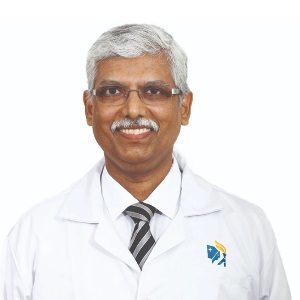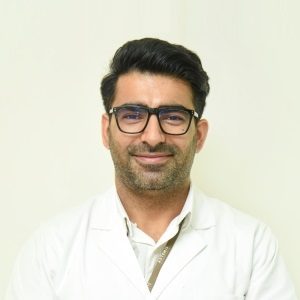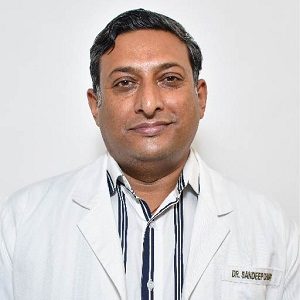Best Doctors in India for Hip Dysplasia Treatment
- Orthopedic Surgeon, Chennai, India
- Over 12 years’ experience
Profile Highlights:
- Dr. Kunal Patel consults on Orthopedics related problems at the Apollo hospitals of Chennai.
- He was part of the team which set Limca’s World record of Highest Joint Replacement Surgeries in March 2015.
- Dr. Kunal Patel is well-trained in Asia’s first and only Brainlab Arthroplasty Computer Navigation Orthopedic suite and has completed several fellowships related to his field.
- Orthopedic Surgeon and Spine Surgeon, Chennai, India
- Over 12 years’ experience
Profile Highlights:
- Dr. Madhu Kiran Yarlagadda is an orthopedics – consultant specializing in Joint and spine surgery and works at the Apollo hospitals of Chennai.
- Dr. Madhu Kiran Yarlagadda’s team carried out Robotic Spine Surgery for the first time in South-East Asia and performed Endoscopic Transforaminal Spine Surgery in Chennai.
- He treats spine diseases and has the facilities and expertise to perform robotic spine surgery. Along with that, he treats patients with joint and other orthopedic issues.
- Orthopedic Surgeon, Chennai, India
- Over 16 years’ experience
Profile Highlights:
- Dr. Arun Kannan is a well-known joint replacement surgeon at the Apollo Hospitals, Chennai.
- In his 16 years of experience doing joint surgeries and treating orthopedic issues, Dr. Arun Kannan has worked in the US as well as India and has gained enough trust and recognition from his patients.
- He has been excellent in his academics as well as practice because of which he received prizes and appreciation in both.
- Orthopedic Surgeon, Chennai, India
- Over 40 years’ experience
Profile Highlights:
- An Orthopedic doctor by profile, Dr. Gopala Krishnan has around 40 years of experience in his field.
- After his initial studies in medicine in Chennai, Dr. Gopala Krishnan moved to the US to pursue M.Ch in Orthopedics in 1984.
- His experience and dedication have helped him gain recognition in the field and build trust among patients.
- Orthopedic Surgeon, Chennai, India
- Over 24 years’ experience
Profile Highlights:
- Dr. Rajasekar P is an experienced orthopedist with 24+ years of experience.
- He treats and consults patients with problems with Joints, fractures, osteoporosis, Spine injuries, etc.
- He is an MBBS and DNB qualified doctor and practices at Apollo hospitals of Chennai.
- Orthopedic Surgeon, Chennai, India
- Over 50 years’ experience
Profile Highlights:
- Dr. Uma Chandran S specializes in orthopedics and is a veteran surgeon at Apollo Hospitals of Chennai.
- He has spent more than 50 years in the field of orthopedics and is believed to be one of the best orthopedists in Chennai.
- He is also known for his expertise in bone replacement surgery, spine movement, fracture treatment, etc.
- Spine Surgeon and Orthopaedic Surgeon, Chennai, India
- Over 18 years’ experience
Profile Highlights:
- Dr. Muralidharan Venkatesan is a consultant in spine surgery from Chennai.
- He provides comprehensive cervical (neck), thoracic (upper back), and lumbosacral (lower back) conditions treatment.
- Dr. Venkatesan pursued MBBS, MRCS, and a fellowship FRCS and shifted his specialization to spinal surgery.
- Dr. Venkatesan has his papers published in several journals.
- Orthopedic Surgeon and Spine Surgeon, Chennai, India
- Over 23 years’ experience
Profile Highlights:
- Dr. Ravi Venkatesan is a spine surgery specialist from Chennai, Tamil Nadu.
- His experience in spine surgery, orthopedics, and spine deformity surgery date back nearly 23 years.
- Dr. Venkatesan has performed several surgeries and has been an active member of various orthopedics groups.
- Many organizations have recognized his service and have awarded him for his dedication.
- Orthopedic Surgeon, Gurugram, India
- Over 10 years’ experience
Profile Highlights:
- Irfan Banday is a brilliant young orthopedic surgeon with over 10 years of experience handling trauma surgeries and ortho problems.
- Irfan received Fellowship in Knee Arthroscopy and Arthroplasty and Shoulder and Upper Limb Arthroscopy, Arthroplasty & Reconstructive Surgery.
- He manages simple & complex fractures, Reconstructive Surgeries of the Knee, Shoulder, Upper limb, and complex tendon transfers.
- Orthopedic Surgeon, Gurugram, India
- Over 18 years’ experience
Profile Highlights:
- Sandeep Chauhan is one of the best orthopedic surgeons and an expert in managing complex fractures, even in children, soft tissue injuries, septic arthritis, and osteomyelitis.
- He performs fracture reconstructions; and arthroplasty procedures like surface replacements, cemented and un-cemented THR, Total Knee Replacement, musculoskeletal infections, UKA knee, hip, shoulder, & elbow replacements.
Best Hospitals in India for Hip Dysplasia Treatment
Hip Dysplasia
Hip dysplasia is a medical condition where a hip socket doesn’t cover the ball portion of the upper thighbone fully. This allows your hip joint to become partially or completely dislocated. Generally, most people with hip dysplasia are born with this condition. Doctors generally check a baby for signs of hip dysplasia shortly after they are born, and during visits. If hip dysplasia gets diagnosed during early infancy, it may be easily corrected using a soft brace. In milder cases, the patient generally does not show symptoms until he/she is a teenager or a young adult.
This condition can cause damage to the cartilage lining the joint, and it can also hurt the soft cartilage or labrum that rims the socket portion of the hip joint. This is known as a hip labral tear.
In older children and young adults, surgery might be required to move the bones into the proper positions for smooth movement of the joints.
Symptoms
The signs and symptoms of hip dysplasia generally depend on age. Babies with this condition generally have one leg that is longer than the other. Kids with this condition might have one hip that is less flexible or limp while walking.
If you are a teenager or a young adult, the first signs that you are going to notice are likely going to be hip pain or a limp. You might also experience ‘popping’ or ‘clicking’ in the joint’, although these might also be symptoms of other hip disorders.
The pain usually comes on when you are doing any physical activity, and it is generally located in the front of the groin. But you might also experience discomfort in the side or back of your hip. It may start out mild and happen occasionally, and can over time become more intense and frequent. Half of the patients with hip dysplasia also suffer from pain at night.
The pain may also cause a mild limp. You are likely to develop a limp if your muscles are weak, or if you have a bone deformity or limited flexibility in the hip joint. If you have a limp for any of those reasons, you probably won’t experience any pain.
Causes & risk factors
Hip dysplasia is known to run in families. It generally occurs more in girls as compared to boys. It shows up in babies since the hip joint is made of soft cartilage when one is born. Over time, it hardens into bone. The ball and socket help mold each other during this time, and therefore if the ball is not fitting properly into the socket, the socket can end up too shallow and not form completely over the ball.
Few reasons why this can happen right before a baby is born, include the following:
- It is the mother’s first pregnancy.
- The baby is in the breech position, which means the rear, not the head is toward the birth canal.
- The baby is huge or there is a condition where there is less amniotic fluid in the sac that the baby has lived in throughout the pregnancy, which limits the movement of the baby.
All of these factors can lead to the amount of space in the womb reducing which can make things crowded for the baby and thus, move the ball out of its proper position.
Diagnosis
During a visit, doctors generally check for hip dysplasia by moving the legs of an infant into different positions that can help indicate whether the hip joint fits together well.
Mild cases of hip dysplasia might be difficult to diagnose and may not cause any problems until you are a young adult. If your doctor is suspecting dysplasia, then he/she will likely suggest imaging tests, such as X-rays or magnetic resonance imaging.
Treatment
Babies
How the condition is going to be treated will depend on the age of your child as well as the severity of the condition. Babies that are diagnosed earlier can wear a soft brace that is going to hold the ball of the joint in the socket for some months. This will help to help mold it into the proper shape. A baby which is older than 6 months might require a full-body cast or surgical intervention.
Older children and adults
Surgery is the only treatment for older children as well as adults. If the dysplasia is mild, it might be treated arthroscopically. This means the surgeon is going to make tiny cuts and will use long-handled tools along with tiny cameras in order to fix the problem.
However, if the condition more serious and the child or young adult is skeletally mature, the surgeon might be going to need to cut the socket free from the pelvis. After this, he/she will have to reposition it so that it will match up better with the ball. This surgery is termed periacetabular osteotomy and it can help to delay or even prevent hip arthritis that can occur because to dysplasia.
Hips that suffer severe damage due of dysplasia might require replacement surgery.
Complications
Hip dysplasia can damage the soft cartilage or labrum that rims the socket portion of the hip joint. This is known as a hip labral tear. Hip dysplasia can also make your joint more likely to develop certain conditions such as osteoarthritis.

